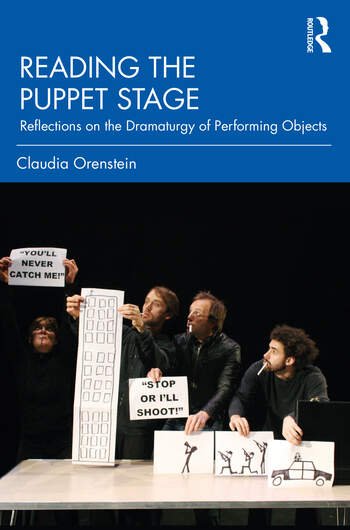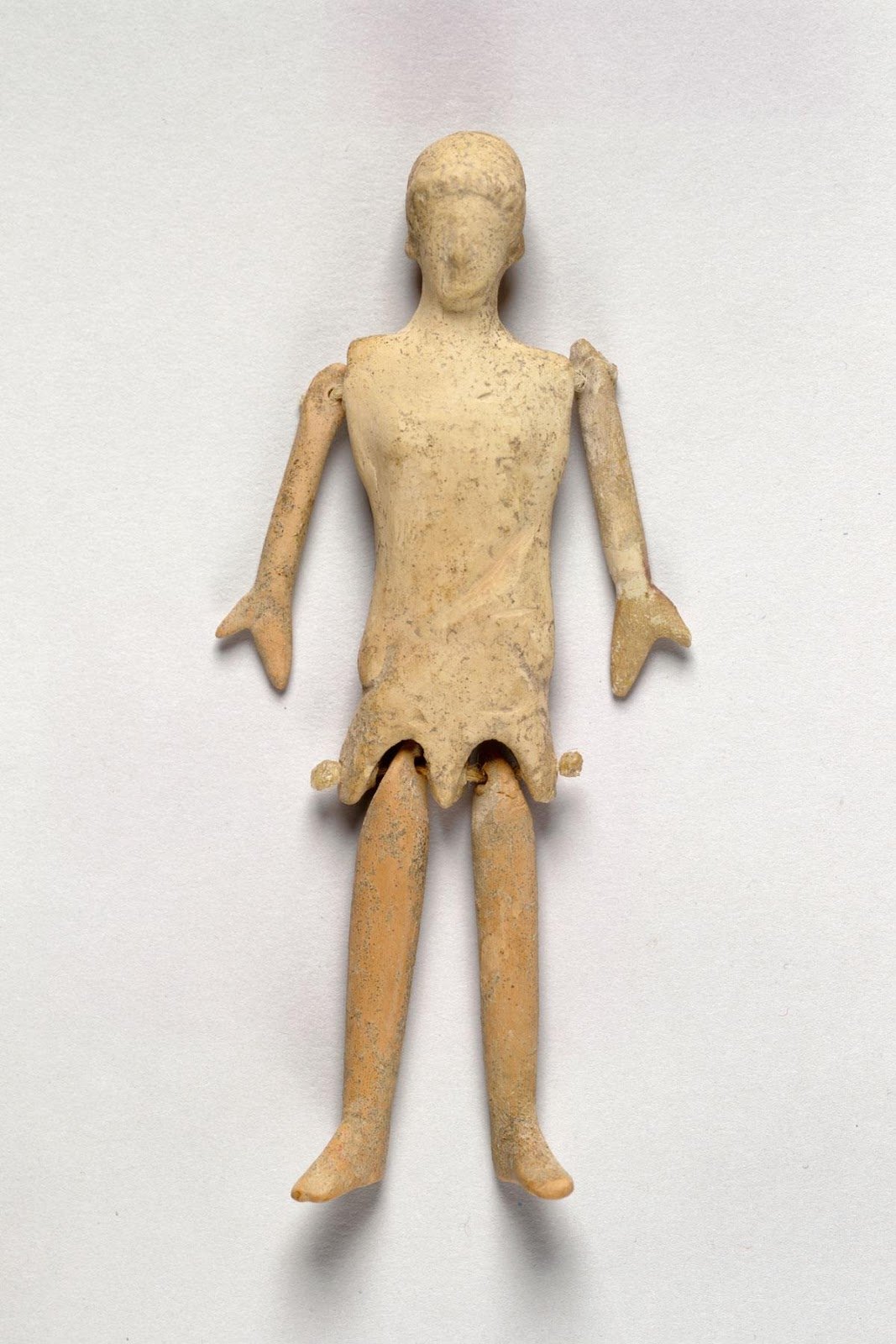This award is named in honor of Nancy Lohman Staub, an original member of UNIMA-USA and Special Citation winner, who has contributed to the understanding of the world puppetry through fostering the museum collection at the Center for Puppetry Arts Museum in Atlanta, Georgia, leadership in UNIMA-International, and her extensive writing on puppetry.
2024 Nancy Staub Publications Awards
BOOKS
The Sicilian Puppet Theater of Agrippino Manteo (1884-1947): The Paladins of France in America
The Sicilian Puppet Theater of Agrippino Manteo (1884-1947): The Paladins of France in America,
Cavallo, J.
NY: Anthem Press, 2022.
Jo Ann Cavallo
—Through the study of the individual [family], Cavallo offers novices, as well as those with scholarly interest from a range of fields, entry points into the deep roots of Sicilian marionette theater.
—I have no doubt that this book will have enormous value to future researchers, but will also give great pleasure to anyone with a serious interest in Italian culture, or puppetry.
—I actually got quite giddy as I read about Agrippino's early history.
Innovation Style and Spectacle in Wayang: Purbo Asmoro and the Evolution of an Indonesian Performing Art
Innovation Style and Spectacle in Wayang: Purbo Asmoro and the Evolution of an Indonesian Performing Art,
Emerson, K.
Singapore: NUS Press, 2022.
Kathryn “Kitsie” Emerson
—Emerson’s thorough and fine-grained research on Purbo conducted over nearly two decades provides an excellent portrait of one dhalang’s creative processes in a way that has no precedent in the English-language literature.
—While focused on one innovative puppeteer (dhalang), this work gives general insight into important innovations in Javanese shadow play practice and training in the twenty-first century.
—Evocative, meticulous “insider” research was shared and the author’s deep knowledge of Java’s wayang kulit Surakarta made available.
The Image of the Puppet in Italian Theatre, Literature and Film
The Image of the Puppet in Italian Theatre, Literature and Film,
Pacchioni, F.
NY: Palgrave Macmillan. 2022.
Fredrico Pacchioni
—This book makes a strong argument for the metaphorical power of the puppet when it appears in different media.
—This is a terrific read that should appeal both to academics and anyone with a serious interest in puppetry or culture in general.
—Pacchioni develops complex and diverse themes in each chapter that allow readers to learn about the complexity of Italian culture through the appearance of and reference to puppetry. He includes futurism and early modernism, the postwar work, and traditional folklore manifestations.
Object Performance in the Black Atlantic: The United States
Object Performance in the Black Atlantic: The United States.
Richards, P.
New York: Routledge, 2023.
Paulette Richards
—Richards covers radically new ground in important and inventive ways. No one has ever written an analysis of African American puppet and object performance.
—This book was radically altered my conception and understanding of Black puppeteers active in the US. This is an important addition in helping scholars and the public understand the landscape of puppetry overall.
—I was particularly pleased to see Ralph Chessé's painting on the cover and the amazing Pandora Gastelum as the finale!. New Orleans front and back!
A Galaxy of Things: The Power of Puppets and Masks in Star Wars and Beyond
A Galaxy of Things: The Power of Puppets and Masks in Star Wars and Beyond.
Searls, C.
New York: Routledge, 2023
Colette Searls
—A groundbreaking and fully fleshed out view that elucidates how we experience what she calls “material characters” in a range of live action and other technological media.
—This book is beautifully written and enriches the conceptualization of material performance.
—By deep-diving into the realm of such a widely known franchise (making the book especially useful for discussing these concepts), she is able to argue for the renewed relevancy of puppetry in contemporary popular culture.
Reading the Puppet Stage : Reflections on the Dramaturgy of Performing Objects
Reading the Puppet Stage : Reflections on the Dramaturgy of Performing Objects
Claudia Orenstein
Abingdon, Oxon ; Routledge. 2023
Claudia Orenstein
—-Claudia Orenstein’s book is a generous, thoughtfully crafted that will be of tremendous use to a wide range of readers, from beginners to specialists, from puppeteers to audiences. Via a personal, accessible narrative of her own path of discovery and a series of varied yet precise examples, she reveals key ways in which puppetry makes unique kinds of meaning that distinguish it from other performance forms.
—This book is outstanding! There also a great conversation about it at the Chicago Puppet Fest/Howl Round Presentation.
—I loved the personal evolution of thinking so clearly presented and the annotated bibliography is also very useful.
—We have wonderful builders and manipulators, but the dramaturgy of the performance is often wanting. One hopes this text can be widely read and the insights built into future productions.
ARTICLES
“Pretending at Hand: How Children Perceive and Process Puppets,”
Cognitive Development 63 (July-Sept. 2022)
“Pretending at Hand: How Children Perceive and Process Puppets,” Lillard, A.
Cognitive Development, Volume 63, 2022, 101202, ISSN 0885-2014.
Angeline Lillard
—This . . . review of studies using puppets with children to assess how children perceive and process puppets . . . offers some interesting insights about children but also it may be able to provide some background on child development that is often ignored when we look at adults’ phenomenological interaction with puppets.
—It's a good start on a fundamental aspect of the appeal of puppetry to children (especially younger ones).
—This article gives insight into reactions of young children to puppetry and can be a significant springboard to future research. It was useful to me as a practitioner often working with children to see a study on this topic.
“Puppets Facilitate Attention to Social Cues in Children with ASD”
“Puppets Facilitate Attention to Social Cues in Children with ASD.”
Autism Research, 14(9), 1975–1985.
Macari, S., Chen, X., Brunissen, L., Yhang, E., Brennan Wydra, E., Vernetti, A., Volkmar, F., Chang, J., & Chawarska, K. (2021).








—A really marvelous start to the long term research needed to try to quantify the puppetry and ASD connection.
—They involved experts in puppetry—something many studies do not. It also acknowledges the limitations and suggests further work. This type of work . . helps to balance our anecdotal experiences . .. Studies like this are an important part of the research ecosystem.
—A model for future research in how puppetry can be used in therapy.
“Bodies Speaking: Embodiment, illness and the poetic materiality of puppetry/object practice”
“Bodies Speaking: Embodiment, illness and the Poetic MATERIALITY OF PUPPETRY/OBJECT PRACTICE.”
Journal of Applied Arts & Health, 11:1&2, pp. 85–102, Tsaplina, M. (2020) doi:
Marina Tsaplina
—Tsaplina examines puppetry through the prism of western science, throwing light on how and why this performance art form has power to communicate and heal.
—Tsaplina is doing significant work arguing for the importance of puppet praxis within medicine. Her writing articulates an understanding of puppetry’s ability to give people a powerful sense of their own embodiment drawn from her engagement as puppeteer with a chronic condition working with the Health Humanities Lab at Duke University.
—Tsaplina calls attention to the way medicine privileges certain kinds of knowledge over others. She contributes new framing like “affective bodies” to the conversation.
"Puppetry and the War in Ukraine”
"Puppetry and the War in UkrainE,” "Puppetry International: Puppetry in Times of War 53. (Spring-Summer 2023
Ruble, B.
EDITED BY: DASSIA POSSNER
PHOTO DESCRIPTION: Babel’s Grandmother, Odesa Regional Theatre
Photo CREDIT: Sergii Geveliuk)
Blair A. Ruble
—Ruble‘s writing reflects the rigor of his training, though it remains accessible . .. . The subject is compelling, covering the puppet theaters in Kyiv/Kharkiv, Lviv, and Odesa in the weeks after Russia invaded Ukraine. This is an inspiring account of the way these theaters put their facilities (and even their lives) in the service of their people and, later, resumed performances in whatever way they could to buoy the spirits of their embattled countrymen.
“Prop Culture: The Shakespearean Clown and His Marotte”
“Prop Culture: The Shakespearean Clown and His Marotte,”
Sheriko, N.
Shakespeare Quarterly 72, 1-2, (Spring-Summer 2022) pp. 126-149
Nicole Sheriko
—This is a terrific article on the fool’s bauble or marotte, drawing on contemporary textual sources, visual sources, playscripts, and much other evidence to present a full picture of how the marotte functioned in both stage drama and other modes.
—Sheriko’s consideration of the clown’s bauble as puppet (specifically a marotte), is incredibly detailed and well researched.
—A deep dive into the culture of marottes, a little-studied form of European puppet. The author's scholarship is impressive as is her understanding of how puppets operate in practice.
“The Puppet and the Puppet-Master in Ancient Greece: Fragments of an Art Form”
“The Puppet and the Puppet-Master in Ancient Greece: Fragments of an Art Form.”
Skotheim, M
Open Library of Humanities, . 8(1) (2022) : 12, pp. 1–25. DOI:
Mali Skotheim
—The author confidently categorizes the different kinds of puppetry, provides vital contextual information on puppetry in ancient Greek society, shows continuities and discontinuities with later forms of European puppetry.
—This presentation is scholarly, clear, and of great use to those researching the history of puppetry through its discussion in Greek classical sources.
—I've never seen this period/region covered so thoroughly and with such depth of sources.
"Special Feature: PIR Review: Four Black American Puppeteers”
"Special Feature: PIR Review: Four Black American Puppeteers.”
Puppetry International:Offstage (Spring/Summer 2022) No. 51 [Kellie Comer: “Ralph Chessé,”Hazel Rickard: “Gary Jones,”Deniz Khateri, with Kathy Foley: “Pura Teresa Belpré,” Chris Burgess with Kathy Foley: “Bruce Cannon,” Kathy Foley: “Revisioning the Past toward Puppetry Futures: World Encyclopedia of Puppetry Arts].
—This group of four short biographies of American puppeteers of color appeared, each written by a different author: "Ralph Chessé" (by Kellie Comer)," Pura Teresa Belpré" (by Deniz Khateri), "Gary Jones" (by Hazel Rickard), and "Bruce Cannon" (by Chris Burgess) with editing by Kathy Foley, who wrote a general introduction. The four articles work both as a collection and as individual panegyrics, starting the long-needed historicizing of American puppetry’s deep and heretofore under-researched debt to important artists of color.



































